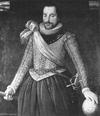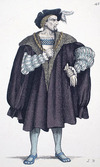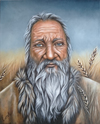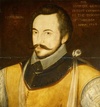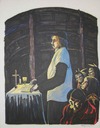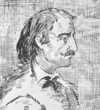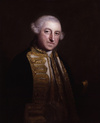fishing rights at Cape Breton, Île Saint-Jean (Prince Edward Island), and the Îles de
drawn up by Edward Wright, mathematician and tutor to Prince Henry, eldest son of James I, and indicate
region one can possibly see, and the heat is considerable”; he had discovered Prince Edward Island, without however being able to determine that it was an island
Saint-Jean (Prince Edward Island), and all other islands in the gulf. Shortly afterwards he was appointed governor and lieutenant-general of this
Canada. The Compagnie de la Nouvelle-France granted him, 19 Jan. 1663, the Îles de la Madeleine, de Saint-Jean (today Prince Edward Island), des Oiseaux, and de Brion, so that he could develop
to the making of extreme anti-Spanish plans – to seize a major island in the West Indies, to capture the foreign fishing vessels at Newfoundland (his first known association with the island), and to
from what is now Prince Edward Island and the mainland) were trading with the French as well as fishing.
Leigh was the intruder in the harbour, but he
when he married Anne, daughter of Edward Greene of London, although there is a possibility that he may have been the John Mason of Hampshire who matriculated from Magdalen College, Oxford, in 1602 (Dean
.
In 1722 he was director general of the Compagnie de l’Île Saint-Jean (Prince Edward Island), formed by the Comte de Saint-Pierre to develop the island. The aim of this undertaking was not purely
. C. MacMillan, The early history of the Catholic Church in Prince Edward Island (Quebec, 1905). Édouard Richard, Acadie, reconstitution d’un chapitre perdu de l
.
That year the Comte de Saint-Pierre, proprietor of Île Saint-Jean (Prince Edward Island), asked for Catalogne, “an excellent person, who understands the work that has to be done and is more suitable than
Acadia, Placentia (Plaisance), and Île Royale (Cape Breton Island), councillor of the Conseil Supérieur of Île Royale, king’s lieutenant and commandant of Île Saint-Jean (Prince Edward Island), knight of
l’Île Saint-Jean. Saint-Jean (Prince Edward Island), Miscou, and adjacent isles had been granted to the Comte de Saint-Pierre in August 1719, on condition that he colonize them. Gotteville
, Galan, and Galand also appear), settler in Acadia and Île Saint-Jean (Prince Edward Island), founder of the Haché and the Gallant families of the Maritimes; b. c. 1663
Vallière was appointed adjutant in July 1720, and became a captain in March 1723. In 1728, during the absence of Jacques d’Espiet de Pensens, he was in command on Île Saint-Jean (Prince Edward
of the government. De Lino was granted a seigneury on the coast of Acadia opposite Île Saint-Jean (Prince Edward Island) in 1697, and was appointed to the Conseil Souverain on 8 May 1702
Chauvreulx* to Acadia in 1733. Negative evidence in church registers suggests that he did not go to Louisbourg or Île Saint-Jean (Prince Edward Island). It would be natural for a silversmith to seek
London for Improving Natural Knowledge (founded in 1660), including the secretary to Prince Rupert, Sir
to obtain, facing Île Saint-Jean (Prince Edward Island), a grant of land called Picquetou (Pictou), as well as a small river called Artigonyche (Antigonish, N.S.). The following year he asked the
BOSCAWEN, EDWARD, naval officer; sometimes called “Wry-necked Dick” from a habit of cocking his head to one side; more commonly






